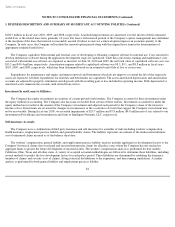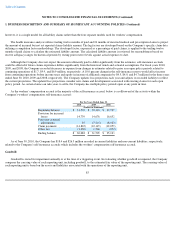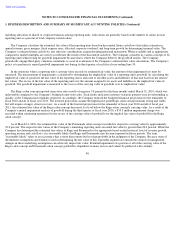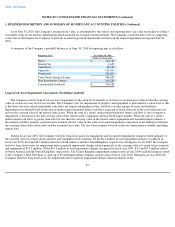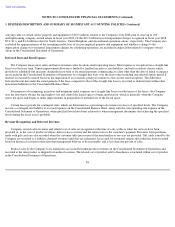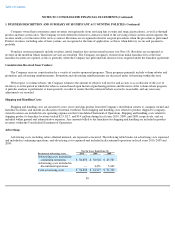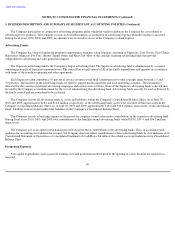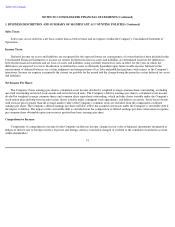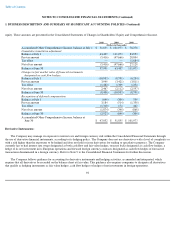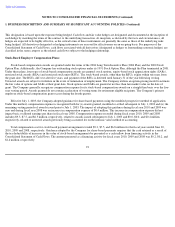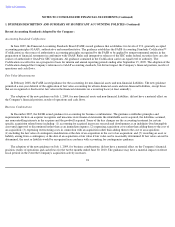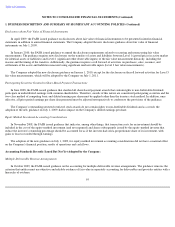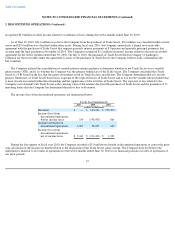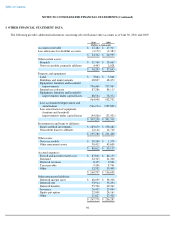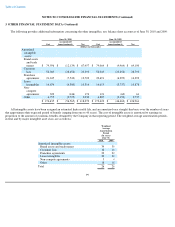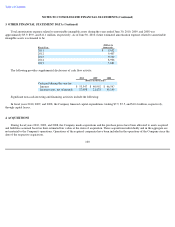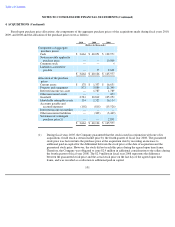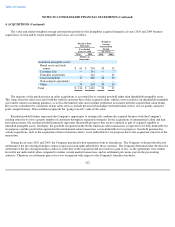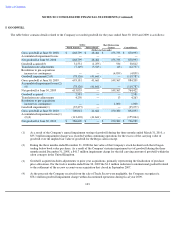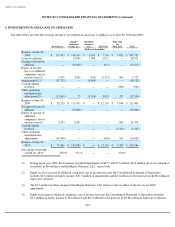Supercuts 2010 Annual Report Download - page 98
Download and view the complete annual report
Please find page 98 of the 2010 Supercuts annual report below. You can navigate through the pages in the report by either clicking on the pages listed below, or by using the keyword search tool below to find specific information within the annual report.
Table of Contents
NOTES TO CONSOLIDATED FINANCIAL STATEMENTS (Continued)
1. BUSINESS DESCRIPTION AND SUMMARY OF SIGNIFICANT ACCOUNTING POLICIES (Continued)
Recent Accounting Standards Adopted by the Company:
Accounting Standards Codification
In June 2009, the Financial Accounting Standards Board (FASB) issued guidance that establishes two levels of U.S. generally accepted
accounting principles (GAAP), authoritative and nonauthoritative. The guidance establishes the FASB Accounting Standards Codification™
(Codification) as the source of authoritative accounting principles recognized by the FASB to be applied by nongovernmental entities in the
preparation of financial statements in conformity with GAAP. Rules and interpretive releases of the SEC under federal securities laws are also
sources of authoritative GAAP for SEC registrants. All guidance contained in the Codification carries an equal level of authority. The
Codification was effective on a prospective basis for interim and annual reporting periods ending after September 15, 2009. The adoption of the
Codification changed the Company's references to GAAP accounting standards, but did not impact the Company's financial position, results of
operations and cash flows.
Fair Value Measurements
In February 2008, the FASB issued guidance for the accounting for non-financial assets and non-financial liabilities. The new guidance
permitted a one-year deferral of the application of fair value accounting for all non-financial assets and non-financial liabilities, except those
that are recognized or disclosed at fair value in the financial statements on a recurring basis (at least annually).
The adoption of the new guidance on July 1, 2009, for non-financial assets and non-financial liabilities, did not have a material effect on
the Company's financial position, results of operations and cash flows.
Business Combinations
In December 2007, the FASB issued guidance for accounting for business combinations. The guidance establishes principles and
requirements for how an acquirer recognizes and measures in its financial statements the identifiable assets acquired, the liabilities assumed,
any noncontrolling interests in the acquiree and the goodwill acquired. Some of the key changes are the accounting treatment for certain
specific acquisition related items including: (1) accounting for acquired in process research and development as an indefinite-lived intangible
asset until approved or discontinued rather than as an immediate expense; (2) expensing acquisition costs rather than adding them to the cost of
an acquisition; (3) expensing restructuring costs in connection with an acquisition rather than adding them to the cost of an acquisition;
(4) including the fair value of contingent consideration at the date of an acquisition in the cost of an acquisition; and (5) recording an asset or
liability arising from a contingency at the date of an acquisition at fair value if fair value can be reasonably determined. If fair value can not be
determined, the asset or liability would be recognized in accordance with accounting for contingencies guidance.
The adoption of the new guidance on July 1, 2009, for business combinations, did not have a material effect on the Company's financial
position, results of operations and cash flows for the twelve months ended June 30, 2010. The guidance may have a material impact on future
fiscal periods in the event the Company's acquisition activity increases.
94


